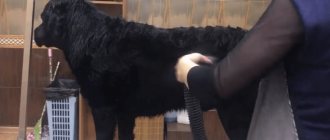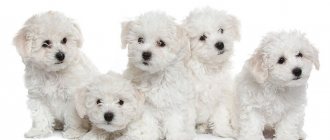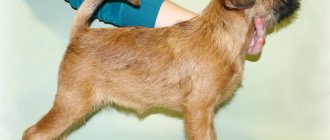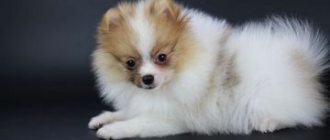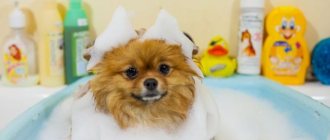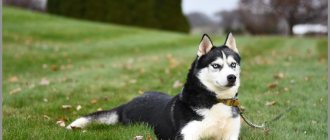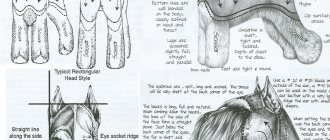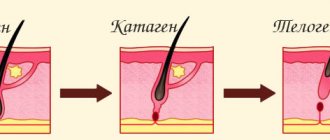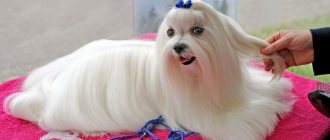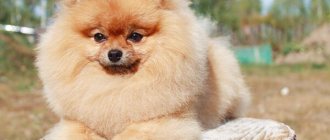The condition of the coat can tell a lot about the health of the dog. Proper coat care will ensure the prevention of many diseases and a beautiful appearance.
Dogs can hardly be called inactive animals. In a thirty-minute walk, the pet will cover more than one kilometer, although its owner will walk no more than 300 meters. Sand, wet soil, dirty water from a puddle - this is not a complete list of what a dog owner may encounter after a walk, not to mention a hunting trip. Heavy dirt is a direct route to the bathroom, but superficial dirt can be removed with the help of improvised means.
In addition to brushing, the coat of some dog breeds requires cutting, trimming and regular combing. Their nature is such that after 1-2 months you may not recognize your four-legged friend if you do not pay due attention to his appearance. If, for example, a German shepherd is considered the least problematic in terms of grooming, then a dog such as a Komondor or a poodle will require patience, attention and certain skills.
Dog coat and hair structure
Caring for dog fur is a troublesome task, let's look at it all in detail. Almost the entire body of the dog is covered with hair (with the exception of the nose and toe pads). The coat provides thermoregulation of the body, protecting the dog from hypothermia in cold weather and from overheating in hot weather. The coat consists of hard, long guard hairs and shorter, softer undercoat hairs. Above the eyes, on the cheekbones, temples and upper lip there are long and very stiff hairs. Hair is a flexible, elastic, keratinized cellular filament that protrudes from the surface of the skin. At the base of the hair in the skin there is a hair follicle that nourishes the hair. The sebaceous glands lie deep in the skin, the ducts of the sebaceous glands open into the hair follicles. Sebaceous glands produce sebum, which coats the dog's skin and coat. This fat layer not only serves as a moisture regulator for the skin and coat, but also has bactericidal properties.
After the hair grows to a certain length, it dies and is pushed out of the hair follicle by new hair that replaces it. This process occurs continuously, so a healthy dog's coat looks even. Shedding with the simultaneous replacement of a large number of hairs occurs twice a year - in spring and autumn. This is due to seasonal changes in temperature and daylight hours; this process is regulated at the hormonal level. The time of shedding can shift significantly, and in some breeds there is no shedding at all (we will talk about the characteristics of such breeds a little later, since their coat requires special care).
Which breeds have less hair?
Taking into account the laboriousness of caring for the fur of four-legged friends, many potential owners choose breeds that require minimal costs. Low-shedding breeds include such popular breeds as the Yorkshire terrier, poodles, schnauzers, and Chinese Crested. Less common breeds that shed less frequently include the Brussels Griffon, Tibetan Terrier, and Portuguese Water Dog.
Dog grooming includes brushing, bathing and trimming. The features of a particular procedure and the choice of instrument are dictated primarily by the structure of the hair of a particular breed of animal.
Dog cleaning
Dog cleaning is carried out to remove dandruff from the skin (dead cells of the upper layer of skin, hair fragments, secretions of the sebaceous glands), as well as dust, dirt, and parasitic insects. Cleaning protects animals from various skin diseases. During cleaning, a light massage is performed, which improves blood circulation in the skin and stimulates metabolic processes.
Dog grooming is a daily process and it is best to do it in the morning before feeding. If the dog gets dirty after a walk, then additional cleaning should be done.
To care for dog hair, use a brush, comb, comb, cloth and a clean cloth. You can also use a vacuum cleaner for cleaning. Before cleaning, the dog should be carefully examined, checked for wounds, scratches, and insects (fleas, ticks and other skin parasites). Cleaning is carried out outside residential premises.
If the dog is very dirty, then first clean it with a bunch of straw or hay (in extreme cases, you can just use crumpled paper). This should be done carefully so that brushing is not painful for the dog.
Cleaning begins with combing the hair with a comb on the dog’s head, neck, body, tail and limbs. Then brushing is done in the same sequence. In this case, the brush is held in the right hand, and the comb in the left. Each time, the brush moves against the wool with light pressure, and then with stronger pressure in the direction of the wool. Every 5-6 movements, the brush away from the dog is cleaned against the brush.
Beginning dog breeders often make incredible mistakes! We will talk about some of them in the section “There was such a case.” So,
| There was such a case. A novice dog breeder, having studied the rules of caring for dog hair, purchased a dog brushing kit at a pet store. From reading manuals, he knew that it is recommended to use a slicker during shedding (he had a German shepherd puppy). However, the set he purchased did not include a slicker brush, but there was a comb! Due to his inexperience, he mistook the comb for a slicker and began to use it to comb out the undercoat. Fortunately, everything turned out to be nothing but irritation of the puppy’s skin. |
The brush is designed to clean the brush, it should not be used to brush dogs, this can damage the skin, cause irritation and even disease.
After cleaning with a brush, begin cleaning with a damp cloth in the same sequence as with a brush. When the cloth becomes dirty, wash it in clean water and wring it out well. The dog's eyes and ears are carefully wiped with a clean cloth.
After cleaning, the area is cleared of hair and dirt. Wash and clean all instruments.
Cleaning for almost all dog breeds (except for some exotic ones) is carried out the same way, but other coat care procedures (combing, bathing, cutting, trimming) differ significantly depending on the breed, so you should consider which groups of breeds are distinguished depending on the characteristics of the coat cover.
How to get used to combing?
First of all, you need to understand that combing is an integral part of caring for an animal. If you yourself are convinced of this, you will be able to act without irritation, and it will be easier to train your dog. If daily long detangling of hair is not for you, it is better to choose hairless or wire-haired dogs.
- They begin to accustom a puppy to brushing very early - from 1-3 months. While he gets used to it, you can comb him in any order and direction, sometimes in several stages. The main thing is that the baby does not get scared. But gradually the dog is taught to be brushed regularly, starting from the head and further towards the tail.
- While the puppy is inexperienced, it is important to handle its skin and fur very carefully and gently, not to scratch or tug. Any pain will be perceived and remembered as a negative experience associated specifically with combing, and in the future the dog will begin to hide, simply by seeing a comb in his hands. You can check the safety of the comb by running it across your palm. If the teeth catch the skin and there is an unpleasant sensation, it is not suitable for you.
- Before brushing, the dog should be stroked and patted on the back, during the procedure you should talk to it affectionately all the time, and after that you should praise it, treat it tasty and let it go with the command “Walk!” Under no circumstances should you shout at the dog or restrain it with the force of several people - it will perceive this as betrayal on the part of the owner.
By following these recommendations, you can teach your dog to calmly respond to scratching within a month. A properly trained animal will perceive the procedure as something pleasant, and you will have a great time together.
Dog coat types
It is customary to distinguish six main types of dog coat. In different sources you can find different names applied to one or another type of wool, so in order to avoid misunderstandings, we will try to describe the features of each type without claiming the accuracy of its name. You should determine what type of coat your pet has, since caring for different types of coat varies significantly.
The coat is of medium length and density (let it be “regular” wool). This type of hair is found, for example, in Labradors, Laikas, German Shepherds, and Spitz dogs. Dogs with such hair are brushed and combed; the undercoat can be combed out with a slicker brush during shedding. Dogs with such hair are usually bathed twice a year, after shedding.
Long wool. This coat is a decoration for Afghan hounds, collies, setters, spaniels and other breeds. Dogs with such hair need to be combed daily with a sparse comb. Some owners of dogs of these breeds use the combed hair of their pets to knit socks and mittens. Such products really have a pronounced healing effect. This coat needs to be clipped on the paws and trimmed on the ears. Each long-haired dog breed requires special coat care.
Smooth wool. Smooth-haired dogs (Doberman, Dachshund) have minimal undercoat, so it is recommended to comb them with bristle or massage brushes. It is a mistake, however, to think that smooth-haired dogs do not shed. If the wool is not combed out, it will accumulate in large quantities on carpets, furniture and clothes. For those breeds whose hair is longer than that of Dobermans, but shorter than “regular” hair (English Mastiff, Rottweiler), it is recommended to use a mitten brush for combing. It is not recommended to bathe them frequently.
Non-shedding curly coat. Poodles, Bedlington Terriers and Kerry Blue Terriers have this type of coat. Dogs with this type of coat require regular haircuts. They are bathed every two to three months. Such wool requires careful care, otherwise it does not renew itself and becomes tangled.
| There was such a case. The owner of the poodle went to study abroad. She entrusted the care of her pet to her younger brother. The guy conscientiously walked the dog, fed it, played with it, but did not bother to take measures to maintain the poodle’s coat in exemplary order (he did not bathe it, did not comb it properly). As a result, the hair began to tangle and the dog’s appearance changed significantly (for the worse, of course). When the school year ended and they were waiting for the poodle's owner to arrive, it became obvious that it was no longer possible to comb the fur. The young man made a radical decision and shaved his poodle's head! This is such an amazing “surprise” for the older sister! So much for dog grooming. |
Coarse wool. This type of wool is considered the most difficult to care for. Many terriers and schnauzers have this type of coat. These breeds need to have their fur plucked (or cut using a special clipper). The procedure of plucking hair is called trimming, it requires time, skill from the owner and patience from the dog.
Atypical coat. Some exotic breeds of dogs, such as Puli and Komondor, have this type of coat. Caring for the coat of such dogs requires consultation with specialists. This group will also include dogs of “hairless” breeds, which also require regular light brushing.
Next, we will look at the basic procedures for caring for hair, taking into account the characteristics of each type.
Caring for short-haired dogs: what will the owner need?
The easiest dogs to care for are short-haired breeds. As a rule, they do not require visits to the groomer, and you can provide proper care for their coat at home. Short-haired dogs are combed with a fine-toothed comb. After this, the fur can be smoothed with a special corrugated rubber glove or a brush with natural bristles. Such dogs are combed no more than once every one to two weeks. Too intense or frequent treatments can damage your pet's skin, so don't overdo it. There is a simple rule: the teeth of the brush or comb should be shorter than the length of the dog's coat.
If your dog has a lot of undercoat, we recommend using a FURminator, which removes dead hair without damaging the skin. The FURminator is usually used once a week, during the molting period - once every three days (find a link to selecting the correct size of the FURminator below)*. After a walk, you can simply wipe your dog with a towel to remove dust and dirt.
Short-haired dogs include, for example: Russian Toy Terrier, Chihuahua, Jack Russell Terrier, Dachshund, Beagle, Smooth Fox Terrier, Boxer, English and French Bulldogs, Great Dane, Thai Ridgeback, Cane Corso, Doberman Pinscher.
Brushing dogs
Combing is the simplest procedure for grooming. Dogs of almost all breeds need to be combed (with the exception, again, of some exotic ones). Every day you should spend at least 10-15 minutes on this procedure. Regular brushing prevents matting of the coat, the formation of tangles, and also makes haircutting and trimming easier. Combing helps cleanse the coat of dirt and dust, and also improves blood circulation by massaging the skin.
| Photo from website: californiapetpharmacy.com |
For each type of coat, a specific type of brush is used when combing. All dogs, except short-haired ones, begin to be combed with a sparse comb to untangle matted hair. Particular attention should be paid to areas with long hair (on the ears, on the face and on the “pants” on the hind legs). Then, with a fine-toothed comb, comb the fur on the ears, face and hind legs again.
Once the coat has been combed, it can be smoothed with a brush, running it in the direction of hair growth from the dog's head through the back and sides to the paws. This procedure can also be performed using a mitt brush.
A slicker brush is used to remove dead hair only for the care of “regular” wool. This brush is not suitable for long-haired breeds.
If matted wool cannot be combed with a comb, then use a special comb called a “tangle cutter.” The teeth of this comb have sharp edges that cut through and unravel the resulting tangle.
Why and how is it important to comb?
Grooming is important for any breed and can only be avoided if the dog is completely hairless. Beautiful, well-groomed coat is not only a source of aesthetic pleasure, but also a guarantee that your pet is healthy. While combing:
- Dead hairs that cause discomfort to the animal are removed from the fur;
- dirt is removed without washing (it is known that you should not wash your dog often, but during walks the fidget is guaranteed to get dirty);
- the coat acquires shine and lays down well;
- the formation of tangles is prevented;
- the molting process is facilitated;
- The skin is massaged, which improves blood circulation and distributes natural fat lubricant evenly throughout the coat;
- Parasites and various foreign objects are removed from the wool if they become entangled there during a walk;
- The dog's health is monitored. Dirty, matted or growing hair that grows too quickly can be a sign of various diseases, most often skin diseases;
- the pet gets the opportunity to communicate with the owner and feel his care.
Not only the dog, but also the owner benefits from grooming. Firstly, by regularly brushing your pet, you can get rid of the problem of lost hair lying around the house and reduce the time spent cleaning. Secondly, not every dog will stand quietly during this procedure. Most of them will make the owner sweat.
How many calories are burned when grooming an active animal? You can burn no less calories than with an hour-long gym session (about 360-540 kcal).
Mud fight: how often and with what can you wash your dog?
Dog grooming
Dog grooming is the procedure of removing excess hair using scissors or a special clipper. Dog owners, as a rule, carry out regular haircuts themselves, but exhibition (“model”) haircuts should be entrusted to a specialist. In some cases, the dog is cut on the recommendation of a veterinarian if certain skin diseases are detected.
Dogs of almost all long-haired breeds can have their hair trimmed (unless it is prohibited by the breed standard).
The main tools for cutting are scissors (blunt, pointed and thinning), as well as special electric and mechanical clippers with various attachments. In salons, dogs are trimmed on a special table with an anti-slip surface. If the owner plans to participate in dog shows, then he should teach his pet to stand on the table for a long time from puppyhood and be calm about the hairdresser’s manipulations. The duration of an exhibition haircut can be up to 6 hours!
Exhibition haircuts are carried out in order to emphasize the beautiful forms of dogs of certain breeds. In addition, a successful haircut can smooth out some of the dog’s shortcomings.
Before cutting, the coat should be thoroughly combed and all tangles removed. The dog is then washed and dried. Depending on the breed and the intended type of haircut, the dog is combed either immediately after washing, or only after the coat has dried.
Dog haircuts are in no way inferior to ours in their diversity! Each breed has its own styles, which, it should be noted, change in detail over time, so owners of show dogs should seriously follow dog fashion! An experienced groomer can choose the haircut that best suits your dog. It should be noted that for young dogs (the first haircut is usually recommended at the age of about 5 months) there are simplified haircut options.
Perhaps the record holder among dogs for the variety of hairstyles is the poodle. Terrier haircuts (Kerry Blue and Bedlington) also have their own characteristics. But the haircut of cocker spaniels, although it makes the dog amazingly beautiful, turns out to be very impractical: the long hair gets tangled and dirty during walks, so to maintain the haircut, show dogs are walked in overalls and hats. There are original haircuts in other breeds as well.
If the dog is not expected to participate in exhibitions, then the owners themselves can give their dog a haircut. This procedure gives the pet a neat appearance. If the owner does not know how or does not want to cut the dog’s hair, then experts recommend cutting the dog’s head once a year (preferably in the spring). Indeed, from an aesthetic point of view, such a dog looks better than an unkempt and unkempt one.
Step-by-step instructions for the water procedure
- Before bathing, it is advisable to comb the dog to get rid of any tangles and matted hair.
- Wet the animal with warm water using a spray bottle. Before watering your pet, always test the water temperature on yourself. To wet the dog completely, lift its paws and rub its belly and chest with a wet hand. The only places where water should not get under any circumstances are the eyes, mouth, nose and ears.
- Squeeze the shampoo into your palm and rub it on your pet's back with both hands. Then soap your paws, neck and belly. Don't forget the tail. Remember that approximately 1 part water is used for 2 parts shampoo.
- After soaping the animal, massage it for a couple of minutes. This will calm an agitated dog. Remember that you cannot leave your pet soaped for a long time, otherwise he will freeze.
- Rinse off all shampoo thoroughly with warm water.
- After you have washed your dog, walk away a few steps and wait for him to shake himself. Then dry it with a towel several times. Give her another shake.
- Now is the time to disinfect your dog and brush its fur.
Do not let your dog out of the house until he is completely dry. A wet dog is easily attacked by parasites.
Dog trimming
Dog trimming is the plucking of dead hair from dogs that shed slowly or not at all (mostly terriers and schnauzers). In a broader sense, trimming is understood as all actions performed with the aim of presenting the dog’s coat in the most advantageous manner (from English to trim - to tidy up, trim, decorate).
Modeling a hairstyle involves different ways of processing a dog's fur:
stripping - pinching with a special knife;
plucking - pinching with the thumb and forefinger;
clipperwork and flatwork are two types of haircuts that differ in the method of execution, time and surface that is processed;
thinning borders or blending (blending) - cutting with scissors, creating smooth transitions from short to long wool with thinning scissors;
difas (difuzz) - removing fur using the stripping technique in two steps - first the guard hair, and after a while the undercoat;
top-knot - wool tied into ponytails and decorated with bows.
Most dogs do not like the trimming procedure and express their displeasure in every possible way: some begin to growl, others squeal, some simply try to run away. Experts say that trimming is an almost painless procedure for dogs, since the old hair is loose and easily removed.
Trimming services
| There was such a case. One very impressionable owner of a Scottish Terrier could not pluck the dog’s fur on her own for fear of hurting her. The dog knew very well about this “weakness” of the owner and with every attempt at trimming she began to whine pitifully. The hostess could not stand this squealing. As a result, the dog was taken to a beauty salon to see a specialist. But as soon as they began to pluck his fur, a plaintive squeal was immediately heard, and the owner... fainted! Since the dog was a show dog, the owner’s husband began taking her to the beauty salon. What is most surprising is that the dog did not act up in the absence of his compassionate owner! |
Where according to the standard the coat should be long (beard, bangs, feathering on the paws, etc.), it is trimmed with scissors. Trimming features for each breed are usually regulated by the standard. The rate of fur growth is individual for each dog, so trimming is carried out 1-3 months before the exhibition, so that the dog is in the best shape by the time of the exhibition.
Trimming is applied to breeds with hard hair. If the coat is trimmed, it gradually becomes soft and wavy, and for these breeds, hard coat is one of the characteristic features of the breed.
The day before trimming, on the day of the procedure and the day after it, it is recommended to give the dog an antihistamine to minimize the risk of allergies. You should gradually accustom your dog to trimming. The first trimmings are best done in stages to teach the dog to stand calmly and not get nervous. The first trimming is carried out at the age of 6-8 months, when the hair can already be plucked, but training should begin in advance, from 3-4 months. In bitches, trimming should not coincide with the first estrus; trimming should not be carried out during the vaccination period. Trimming in winter is also not recommended.
If the dog does not participate in exhibitions, then trimming can be replaced with a haircut. However, cutting does not remove the roots of dead hair from the hair follicles, so in order to avoid skin irritation, the trimming procedure must still be carried out at least once a year.
Trimming and cutting procedure
Some breeds require grooming. If this is not done, then you can lose the original appearance inherent in the breed, as well as maintain the coat in optimal condition. It is carried out using a mechanical, electric machine or scissors.
Trimming is the process of plucking out dead hair during shedding. It is produced by a specialist using knives with small and large teeth.
There is an opinion that short-haired dogs and cats are easier to care for. Is it really? How is caring for short-haired pets different?
Coat length is one of the main criteria for choosing a pet. Many people purposefully look for a cat or dog with short hair because they are considered easier to care for. But is this really so? Indeed, dogs and cats with short hair do not need to be brushed often, and this is a huge plus. But they shed just the same. And although short hair is not as noticeable as long hair, it is much more difficult to clean it from clothes and furniture. But that's not the main thing. It turns out that short hair gets dirty faster and smells more often (in dogs). Why is this happening? To understand, you need to understand the characteristics of short hair.
Short hair: features
Short-haired cats and dogs have a poorly developed undercoat: for every 1 primary hair there are up to 6 secondary hairs. Such wool cannot protect the skin from the adverse effects of the environment, and the body protects itself in another way - by producing sebum. Sebum is a mixture of extracts from the sweat and sebaceous glands that are secreted into the follicular sac where hair grows. It has antibacterial, water-repellent and many other useful properties, which means it protects the skin well from temperature changes, dryness and injury. However, due to the increased production of sebum, short-haired pets get dirty faster, and dogs smell stronger. This is the main feature of the short coat type.
The production of sebum in short-haired dogs and cats is 30% greater than in animals with medium and long hair.
The second feature is the small angle of inclination of the hair to the skin (about 30 degrees). This provides a tighter fit to the wool and increases its protective properties. The other side of the coin: removing dirt from the skin with a dense coat is more difficult. But if you choose the right tools, the problem can be quickly solved.
How and with what to wash a short-haired pet?
We already know that short-haired pets produce more sebum than their counterparts with medium and long hair, and that their fur is denser. To eliminate grease, you will need a shampoo with high cleaning properties. But the conditioner, on the contrary, should be softer and more nourishing, because after using shampoo it will have to restore the protective layer of the skin.
The correct combination of shampoo and conditioner is very important in this case. These products work as a team: the shampoo removes sebum, and the balm restores protection so that the skin does not become irritated or dry out. As a result, the skin and coat are clean, and the hydrolipid layer and the functioning of the glands are not impaired. There is no need to worry about unpleasant odor, rapid skin contamination, irritation and dryness.
Proper care of short hair means, first of all, the right products. Shampoo and conditioner should take into account the characteristics of the coat. Thus, all cosmetics of the top brand Iv San Bernard are divided according to hair type (short, medium and long), based not on the length of the hair, but on its properties and structure. By the way, ISB is the first company in the world to divide its product range in this way. All other manufacturers have already followed suit. Shampoo and conditioner ISB Traditional Line Lemon are ideal for caring for short hair; for sensitive skin, sulfate-free products Traditional Line PLUS Lemon. But whatever brand you choose, carefully read the instructions for use.
Shampoos and conditioners are concentrated and require dilution. If the products are applied to your pet in their original form, they will be very difficult to wash off, and the pet may experience an allergic reaction.
During bathing, shampoo is carefully applied in the direction of hair growth. It is better to start with the most contaminated areas, for example, from the legs, and only then move to the back and other areas. It is important to rinse the shampoo well, right until it squeaks. After this, according to the instructions, apply conditioner and also rinse thoroughly. Ready! After washing, do not forget to dry your pet and treat him with a treat, because for many, bathing is a real feat. Be careful, choose good care products, and let your cats and dogs always shine!
Breeds with long coats look luxurious and impressive. Almost all owners of short-haired four-legged pets who based their choice on easy care can agree with this statement. But is it so difficult to care for long hair?
What actions will need to be performed to make the animal look well-groomed and impeccable? Let's share recommendations from experienced ones.
[custom_ads_shortcode1]
Bathing dogs
To wash or not to wash? Perhaps this is one of the questions on which every dog breeder has his own opinion. Some argue that you don’t need to wash the dog at all, since in the summer it bathes in the river, and in the winter in the snow, and this is quite enough. Others are of the opinion that the dog should be bathed regularly to maintain hygiene and cleanliness in the house. Of course, there is no single answer to this question. It all depends on the characteristics of the breed, the type of coat, even on the individual preferences of each dog and its owner! Nevertheless, we will try to formulate some general recommendations.
The most convenient way to wash your dog is to use a bath. If the dog is small, then you can choose a basin of the appropriate size. The water level should not reach the dog’s body; only the limbs should be in the water. The shampoo should be selected taking into account the type of coat of your pet. Dogs with undercoat are washed less often than smooth-haired dogs. Before washing, the dog should be combed, untangled or all tangles removed. The water temperature should be slightly higher than the dog's body temperature (about 39⁰ C).
| There was such a case. Parents bought a puppy for their five-year-old child. Since there were no dogs in the family before, there were no skills to care for a puppy. The young mother, fearing that the child would become infected with something from the dog, decided to strictly observe the rules of hygiene and bathed the puppy weekly. At the same time, she used baby soap, believing that it was the safest for the puppy. Since the soap was poorly washed off from the fur, the puppy first developed irritation on the skin, and then the hair began to fall out. Fortunately, inexperienced owners promptly contacted a veterinarian and received professional advice on caring for dog hair. Six months later, the puppy's fur grew back. |
Shampoo containing insecticides should only be used if fleas are present. It is possible to use balm if the condition of the coat requires it. It is necessary to rinse off the shampoo as thoroughly as possible, since the alkali remaining on the skin can cause irritation. It is better to use a shower to rinse off. After washing, the wool must be wiped with a clean terry towel. If the dog is drying itself after bathing, do not interfere with it; it is better to lay out a dry towel for it and let it ride on it at its own discretion. In general, caring for dog hair is not that difficult.
While the dog is drying after washing, it is recommended to constantly brush it in separate sections. In this case, the use of a hair dryer is allowed if the dog is accustomed to it. The air stream should be warm.
After bathing, you should not take your dog outside to avoid catching a cold, so the optimal time for bathing is after an evening walk. If the dog lives in the yard, then you can bathe it only in the warm season, and it is not necessary to wipe the fur; the dog will shake itself off. After bathing, in this case, the dog should be kept on a leash until the fur dries, so that it does not lie on the ground.
After each bath, dogs shed lightly, which is more noticeable in dogs with an undercoat.
Selection of soap accessories
Specialized pet stores provide a wide range of detergents for caring for the fur of four-legged friends. When choosing bath and soap accessories, the owner should take into account factors such as the length and color of the coat, its condition, and whether the pet is allergic to certain components of the shampoo.
First of all, you should pay attention to what type of coat the shampoo is intended for. For example, for long-haired breeds, special products have been developed to make further combing easier.
When choosing a shampoo, you need to pay attention to the composition. The less aromatic and coloring substances it contains, the less likely it is that your pet will develop an allergic reaction.
Shampoos and conditioners for dogs
Additional ingredients in the form of medicinal herbs and other beneficial components will be required if the owner pursues certain goals. For example, if your pet has dry skin, then shampoo with oat extract will help, and to achieve an antiseptic effect, you should pay attention to the presence of tea tree oil in the composition.
For long-haired breeds, conditioners can be used. They make hair easier to comb and prevent the formation of tangles. The use of conditioners makes the coat shiny and elastic, and helps repel dirt.
To learn how to choose shampoo for your dog, watch this video:
Beauty salon services for dogs
Today, numerous beauty salons offer dog grooming services for four-legged fashionistas. The dog owner can bring his pet to specialists, or can order such services at home. After analyzing the price lists of companies providing dog washing, grooming and grooming services, we have compiled an approximate price table. It should be noted, however, that prices vary significantly from region to region.
| Breeds | Washing and drying | Combing | A haircut | Trimming |
| Small breeds | From 600 to 1100 rubles. | From 300 to 800 rub. | From 300 to 1500 rubles. | From 200 to 2000 rub. |
| Medium breeds | From 1000 to 3500 rub. | About 1000 rub. | From 500 to 2000 rub. | From 200 to 2500 rub. |
| Large breeds | From 1600 to 5000 rubles. | About 1000 rub. | From 700 to 2500 rub. | From 300 to 3000 rub. |
How to wash your dog's paws?
But regular washing of paws after a walk is a necessity. It’s not just a matter of apartment hygiene: in winter it’s worth washing off street chemicals from your pet’s paws as quickly as possible. You can pick up a small dog and rinse its paws in the sink, but for medium and large breeds it is more convenient to use a paw washer (we wrote in detail about this device ). A paw wash is also convenient for long car trips: at a stop you take your dog out “to do some business”, then wash its paws right next to the car and drive on without worrying about the cleanliness of the interior.
Bathing animals with long coats
Almost every owner of long-haired dogs wonders how often and regularly it is necessary to carry out hygiene procedures. In fact, the length of the coat does not affect the number of baths. Excessively frequent washing can dry out the epidermis and have negative consequences on the coat. It becomes brittle and dry, increasing the risk of dandruff formation.
Unfortunately, such a recommendation is difficult to adhere to in our climatic conditions. Active games and walks during rain, snow and slush mean that a pet, especially a short one, will be completely dirty. You can get rid of the need for regular baths; for this you will need to purchase a special overalls. It is made of water-repellent material, so it will act as a barrier.
When choosing, we recommend paying attention to the classic button closure, this way long hair will not get stuck in the zipper or Velcro. This will not cause significant discomfort to dogs, like other options voiced.
[custom_ads_shortcode2]
Medium wool
Keeping dogs with medium-length hair is practically no different from long-haired dogs, but much simpler.
Animals with this type of hair need to be brushed regularly, as their undercoat is quite dense. To do this, you can use a wide variety of tools: a stiff brush, a slicker brush, a furminator, and fine-toothed combs.
If you do not pay due attention to this, tangles quickly form, which can only be gotten rid of by removal. Animals are bathed when they become dirty, using a shampoo that suits them. Medium-haired dogs are considered one of the most unpretentious.
Creative grooming and perfume
Perhaps this is overkill. But in demand.
Paints for “ creative grooming ” allow you to paint your animal in all the colors of the rainbow. In addition to paints, creative owners are offered rhinestones, glitter and stencils for applying designs. Manufacturers swear that the dyes are based on plant ingredients, do not contain ammonia and will not harm the wool or health in general.
Perfume. Some groomers consider it a special touch to finish the job with such a touch as spraying the dog with some kind of scent. At the owner’s choice, of course, since the concept of a pleasant smell in an animal and a person is somewhat different. Today, colognes and perfumes for animals are produced that do not contain alcohol and, according to manufacturers, will not irritate the delicate nose of the pet.
